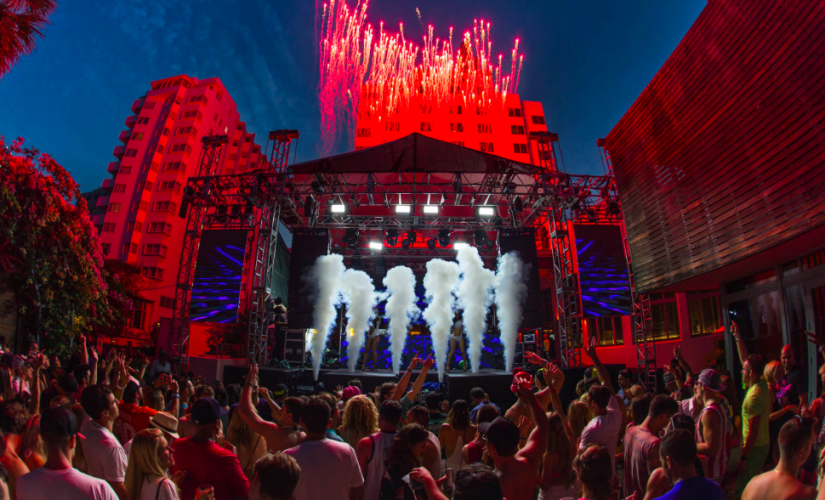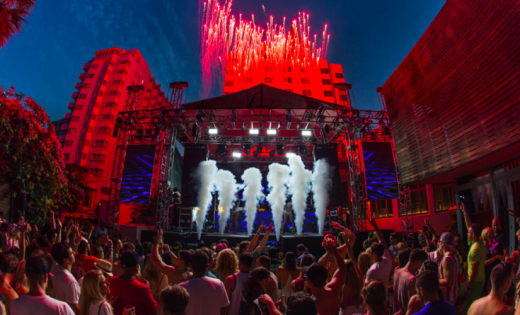In an Experiential-Obsessed Marketplace, Surkus Uses Tech to Stand Out
In an Experiential-Obsessed Marketplace, Surkus Uses Tech to Stand Out

Experiences have flooded the marketplace. Whether they’re investing in pop-up stores or festivals, brands have recognized the major shift happening. The IPA Bellwether Report found that in the U.K., experiential marketing was the only area to experience significant growth in spend in 2017 besides internet marketing.
Similarly, EventTrack found that American consumers gravitated toward the brands that gave them experiences to savor, with 74 percent reporting they were more likely to purchase from brands engaging them with experiences. In fact, 98 percent admitted they created social content when they participated in these experiences — and all of those who created content also shared content.
The writing’s on the wall for companies that have paid attention. These experiences can be beneficial to brands of every type, and Surkus is determined to use technology to make experiential accessible.
Abandoning the Spray-and-Pray Model
Surkus classifies three major areas as experiential: branding experiential (such as pop-ups), ticketed experiences (such as concerts or festivals), and immersive experiences (such as VR). In working with brands that launch experiences in every category, Surkus focuses on making the strongest matches it can between its members and its clients.
It does that through technology. The brand’s platform uses an algorithm to identify the right audience members for each experience being offered. By curating a group that’s expressed interest in a certain subject or a similar brand, Surkus pinpoints the members who will feel excited about the opportunity.
That translates to a win for Surkus’ client companies. Surkus’ focus on targeting the right audience makes both attendance and engagement possible. Clients can ask for a variety of engagements — social content, surveys, market research — with Surkus enabling communication between clients and members throughout every point of a campaign.
“We don’t need to complicate things, but simplify them,” explains Stephen George, Surkus’ CEO. “We want to make sure the right audience is attending and engaging, and we know the little things are our clients’ entire objective in working with us. It doesn’t have to be complex.”
Capitalizing on What They’ve Got
Surkus’ knowledge of where members are at every touchpoint is valuable: By tracking members’ locations and activity, the platform can nudge them and offer reminders. The platform, designed for Instagram posts, can point out that a member, still at an event, just took 50 photos and should post one of them. If the member exited the venue, the client can ask questions to get real-time feedback on how the installation or product played in front of its audience.
“It’s important to be able to time our interactions and engagements correctly,” George says. “In the moment, members shouldn’t be interrupted so they can absorb the experience. But there hasn’t been an easy way to transfer instantaneous reactions. Brands don’t want to target people when they walk in or when they’re in the middle of a performance — they’re not going to get very good information.”
But good information is there for the taking. George points to concerts as an example: If a concert producer spent the majority of his budget on the closing act and the grand finale fireworks, but 40 percent of concertgoers left two hours before the encore, Surkus can provide that data to the producer so he can reconsider where he’s spending his money. While Surkus’ goal with members is to provide them with compelling experiences, the brand’s focus for clients is driving long-term value.
“If brands have already planned out the production of their events and are wasting money at certain times, we need to be able to tell them,” George explains. “They may be able to restructure the production to use the same layout of money but increase engagement. And the longer we can keep people engaged, the more ancillary revenue that drives — but there’s also a better experience because there’s no lag in the event itself.”
Bringing Experiential to the Masses
Technology has made things more affordable, particularly through automation. Surkus itself thrives on this fact: While a PR agency helping with experiential activations can handle 20 clients at one time, Surkus can work with 10,000. “Bodies just aren’t as efficient as our algorithm,” George says.
This sheer volume helps every activation under Surkus’ umbrella — as its base grows, so does its data collection. This enables Surkus to give first-timers a head start by giving them insight into what’s worked well for similar types of events or which types of audience members responded best. But, as George says, that data becomes more meaningful as clients repeatedly work with Surkus to launch experiences; the brand can provide continuous data on who engaged or took actions so constant tweaks can occur.
The affordability and ease created by technology hasn’t completely trickled down, and George says that’s created a misconception that lingers among small brands. “There’s a perception that events have to be grandiose, multimillion-dollar affairs that only global brands can afford,” he says. “It can be a small mom-and-pop retailer with a pop-up event, and that can be just as enticing as Under Armour launching a $1 million activation at its store. The point is targeting the people who will respond.”
Brands from small businesses to international conglomerates should be fitting experiential into their budgets, regardless of the size. While attention is paid to experiences offered by Netflix, Anheuser-Busch, or LiveNation, anyone can do it, George points out, and platforms like Surkus enable the same types of results for brands of every size.
Smaller brands that refuse to invest in experiential, in fact, will run into a universal problem: ad blockers and other tools that allow consumers to bypass marketing. With people skipping commercials regularly and billboards simply not having the reach they should for their cost, experiential has become a more affordable way to stick in consumers’ minds. Surkus’ platform offers a la carte services, allowing clients to determine what’s most important in terms of engagement and what fits within their budget. Getting one attendee to walk through the door at an event can cost as little as $3. After an era of spray-and-pray advertising, with money sprinkled everywhere, experiential can result in reverse sticker shock.
What’s Next
Bringing experiential to the masses also means expanding markets, and that’s next on Surkus’ agenda. George, the former co-founder and head of operations for Groupon, says the Los Angeles-based business launched in Boston last month and is “relaunching” in San Francisco in October.
“A lot of our markets in the past grew organically, but now we’re announcing launches in targeted areas — we’re highly dedicated to these new markets,” George says. The brand also has an eye on global growth and serving its clients in any market they’re operating in; beyond its office in Hong Kong, Surkus plans to expand to Singapore in the next few months.
That reinforces the company’s belief that experiential isn’t necessarily what people think it is — and it’s not outside anyone’s reach. By incorporating technology to make experiential activations more affordable and accessible, Surkus just may have found a way to bring personalized experiences to the masses.
(23)


